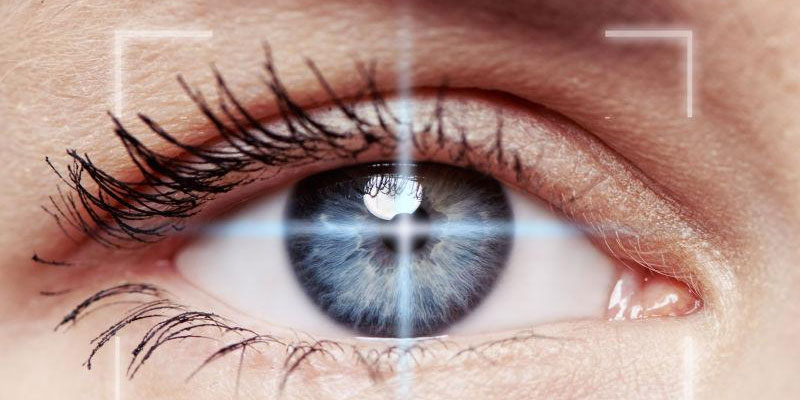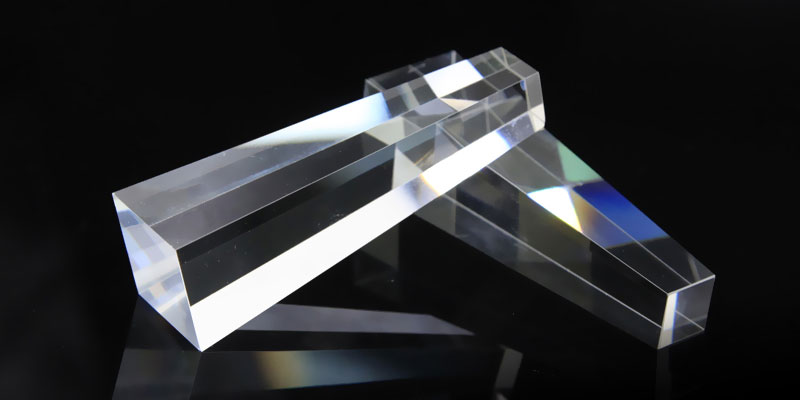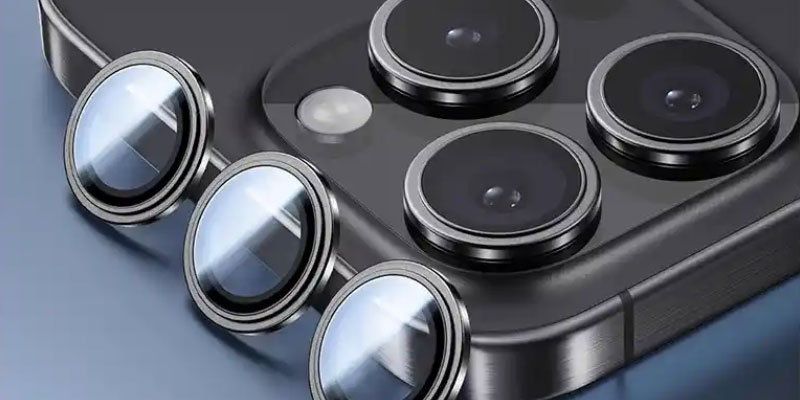
1. Spherical Lenses
Spherical lenses have a spherical shape corresponding to a cross-section of a sphere (Figure 1). A sphere is a rotationally symmetric optical element with a constant curvature radius relative to the geometric center. This means that the optical effective area can be described by specifying a single parameter, namely the radius R. Since this parameter is constant across the entire surface, spheres offer a cost advantage in terms of manufacturing and processing.
Figure 1: Describing the optical effective area of a sphere using radius
In terms of production costs, spherical lenses have a clear advantage. This is because the uniform shape of the sphere ensures a simple manufacturing process and shorter production times. Spherical lenses are suitable for applications requiring rapid optical detection and uniform measurement. Both tactile measurement methods (e.g., profilometers or 3D coordinate measuring machines) and optical measurement methods (e.g., interferometers and computer-generated holograms (CGH)) utilize spherical lenses for measurement.
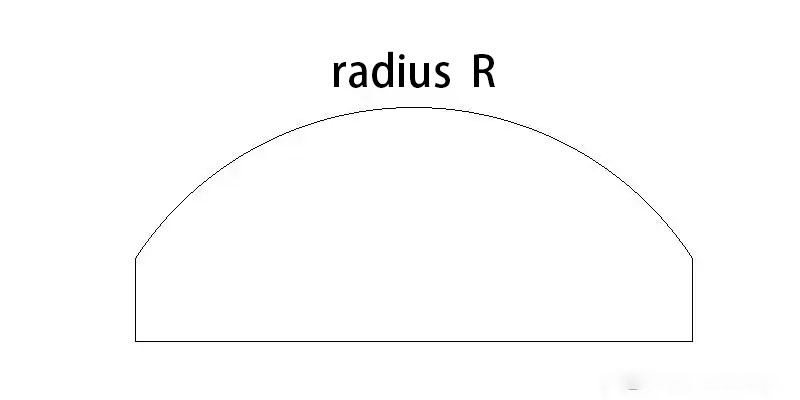
Spherical lenses have a wide range of applications, such as metrology, aerospace (spectrometers installed inside satellites), or medical technology (slit lamps used to examine the anterior segment of the eye). Depending on the shape, scattering, or focusing characteristics of spherical lenses, they can refract incident light to the desired extent. In imaging systems, high image quality is accompanied by low imaging errors. By selecting an effective aperture, spherical aberration can also be reduced, as it blocks other peripheral incident light rays with stronger intensity.
Additionally, using multiple spherical lenses can improve image quality, but spatial constraints of the optical system must be considered. Achromatic correction can be achieved by combining one or more converging and dispersing lenses. Typically, low-refractive-index positive convex lenses and low-refractive-index negative concave lenses are bonded together to improve spherical aberration and chromatic aberration in optical systems, such as achromatic lenses used in photographic lenses.
2.Aspherical Lenses
If other factors are considered in an optical setup, such as high image quality, numerical aperture, or space savings, aspherical lenses are the optimal choice. Aspherical lenses are rotationally symmetric optical elements with curvature radii that deviate radially from the lens center (Figure 2). Due to this unique surface geometry, asynchronous lenses differ from spherical lenses in that they can significantly improve the imaging quality of an optical system. Their varying curvature radii result in deviations from spherical lenses.
Figure 2 Description of the optical effective area of spherical and asynchronous lenses
Generally, any lens whose radius deviates from a spherical shape is considered an asynchronous lens. As shown in Figure 3, the incident light beams intersect at a common focal point, thereby preventing spherical aberration. Therefore, aspherical lenses are superior focusing optical components. In contrast, the incident light beams of spherical lenses deflect more strongly as the distance from the optical axis increases and do not intersect at a common point, resulting in aberrations that cause blurry images (Figure 3). Thus, using aspherical lenses improves image quality. In terms of optical design, the difference between aspherical lenses and spherical lenses lies in the higher degree of freedom offered by aspherical lenses, meaning more complex lens surfaces can be created to achieve better optical element surface quality.
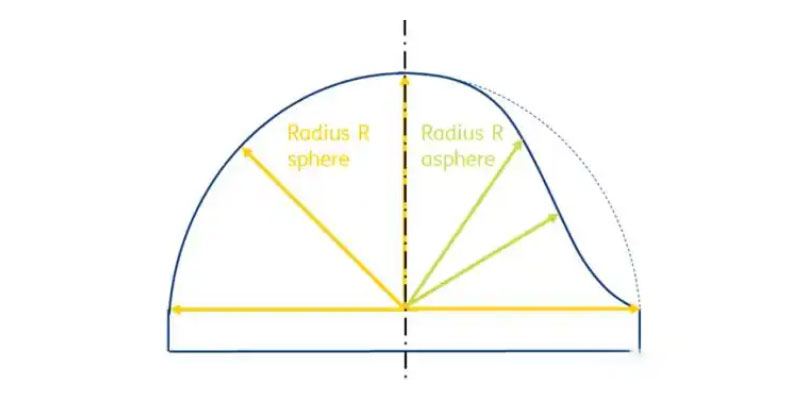
Figure 3: Correcting spherical aberration using an aspherical lens
Another advantage of aspherical lenses over traditional lenses is the reduction in the overall length and weight of the optical system. The phenomenon of reduced optical system size in Asphericon aspherical lens applications can also be found in other optical devices, such as photographic lenses. In a system with only one lens, by optically magnifying one surface of two lenses, a focal length system can be achieved, along with beam expansion and increased beam diameter, without causing divergence errors. Due to the focal length characteristics of this system, multiple lenses can be connected in a row to reduce the size of the optical system while changing the total beam diameter.
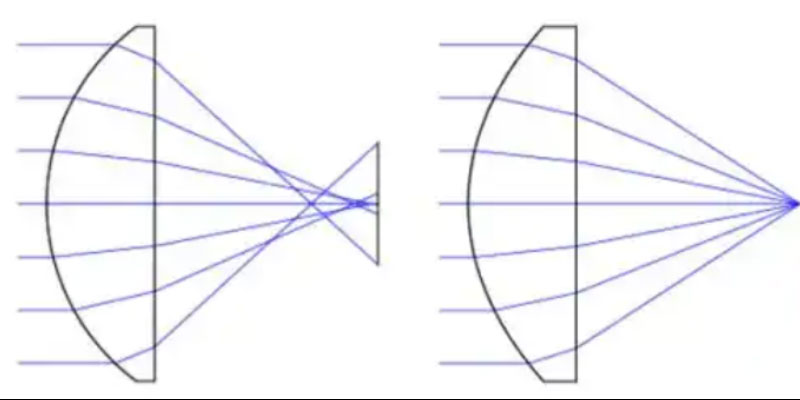
3.Comparison of Spherical and Aspherical Lenses
In terms of imaging quality, aspherical lenses clearly dominate, but the differences between aspherical and spherical lenses are still reflected in higher production/measurement requirements and higher manufacturing costs. The table below shows a basic comparison of the two lens types:
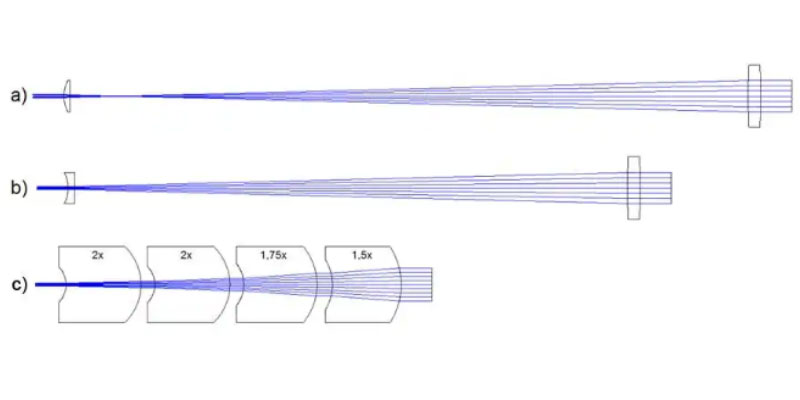
The combination of two lens types can also achieve excellent imaging performance. When it comes to the difference between aspherical lenses and spherical lenses, since spherical lenses are typically lower in cost, the number of aspherical lenses in an optical system is often reduced while still ensuring good imaging performance. The importance of choosing which lens type to use depends on the specific application and optical requirements for imaging quality, such as improving spherical aberration or achromatic aberration. From the perspective of Optlenses’ aspherical lens manufacturing, as production processes continue to evolve, the focus will increasingly shift toward lens surface quality rather than cost considerations. This is because as lens surface quality improves, many optical tasks can be addressed more effectively. The demand for new technologies based on high-quality optics will continue to grow, necessitating more complex and powerful optical components. Optlenses will increasingly focus on optical element surface quality, which will have a positive impact on customers’ specific requirements, as improved surface quality enables more effective solutions for various optical tasks. Spherical and aspherical optical systems will continue to play a decisive role in economically achieving new applications based on photonic solutions.
optlenses
Related posts
Activity 11 Optics Of The Human Eye
What is The Surface Area of This Rectangular Prism Brainly?
How to Get Super Glue Off Eyeglass Lenses?
Why are Some Phone Companies Copying Iphone Camera Lenses?
